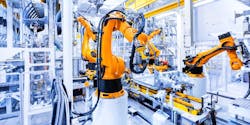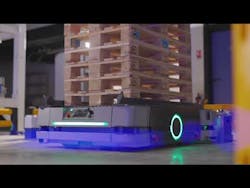In the manufacturing industries, TÜV Rheinland is recognized for its work promoting quality and safety standards, practices, and products. Founded in 1872, the testing, inspection, and certification services company addresses multiple business sectors, with its industrial services and cybersecurity unit representing more than 25% of the company’s revenues.
Considering its focus on so many different aspects of human life, technology, and the environment, TÜV Rheinland brings a unique perspective to the automation market—a viewpoint that can be helpful amid the changes still being wrought by the COVID-19 pandemic.
“The challenges of the pandemic only emphasized how necessary robotics technology is in addressing the needs of our world,” says Ryan Braman, U.S. director of commercial products at TÜV Rheinland and recognized robotics safety expert. “More than ever, consumers are stressing desires for immediacy and convenience. Manufacturers and retailers know that investment in tech will be key in keeping up with these demands.”
Given all the changes to business and personal life since early 2020, TÜV Rheinland recently released its top 3 predictions for the robotics industry. Those predictions are:
Prediction 1: More automation in the supply chain
Shortages of numerous items early in the pandemic, most notably toilet paper and hand sanitizer, made it clear to most everyone that many supply chains could not handle a quick, significant increase in demand. This problem was only made worse by an ensuing labor shortage. That’s why TÜV Rheinland predicts that manufacturers will increasingly invest in traditional and collaborative robotics technologies. “While many production lines are already fairly automated, companies will still strive to improve efficiency in all stages of the production line—from handling raw materials at the start to warehousing at the end.”
TÜV Rheinland’s take on this is echoed in a recent report from Bloomberg on capex increases, which stated: “Global companies from noodle makers to semiconductor giants are spending on new plants and machinery in ways they haven’t done for years.”
This last prediction from TÜV Rheinland won’t be surprising to automation industry professionals, considering the necessity of advanced sensing and communications technology to any automated technology. More specifically, TÜV Rheinland expects that manufacturers of Lidar, camera, radar, and other sensing equipment will see increased investment and implementation in the wake of expanded automation capex across industry. “These technologies will improve robot capability and efficiency,” said TÜV Rheinland. “Combined with the rollout of 5G and advanced fleet management systems, the boom in communications technology will enable significantly improved data transfer rates, connectability, and oversight.”
In addition to its top predictions for the robotics industry, TÜV Rheinland also pointed out that major robotics industry standards—such as UL 3300, UL 3100, ISO 10218-1, and ISO 10218-2—are currently undergoing significant revisions, and will likely be updated in the near future.
To learn more about how TÜV Rheinland supports industry compliance, visit its Robotics page.



